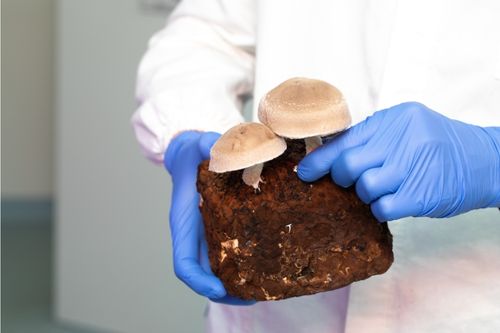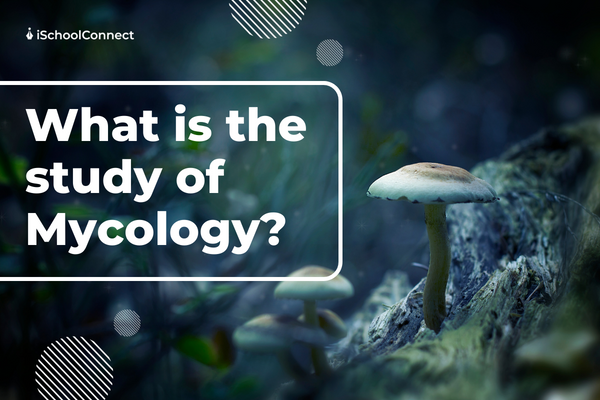Table of Contents
It may come as a surprise to learn that Mycology is not a flourishing field. The majority of colleges do not offer Mycology programs, and this trend does not appear to be changing. Over 1 billion individuals worldwide are infected by fungal infections. They also destroy a third of the global food supply! On the other hand, many kinds of fungi are beneficial to humans, including those we consume and utilize as medication.
What is Mycology?

Mycology is the study of fungus, which includes yeasts and mushrooms. Many fungi have medical and industrial use. Mycological research has resulted in the development of antibiotics such as penicillin, tetracycline, and other medications. Mycology has significant uses in the dairy, winemaking, and baking sectors, as well as in manufacturing dyes and inks. Medical Mycology is the study of pathogenic fungi that affect people.
Mycology is the scientific study of fungi, constituting a whole kingdom of life. Just like Botany is the study of plants, Mycology is the study of fungi. The majority of the scientific community classifies mycologists as microbiologists. To date, researchers have discovered approximately 70,000 species of fungi.
Researchers estimate that there are up to twenty times as many fungal species in the world. This suggests that there are approximately 1.5 million species of fungi on Earth. There are only approximately 350,000 recognized species of flowering plants. The kingdom of fungi is enormous, yet we know little about it.
Father of Mycology
Heinrich Anton de Bary was a German botanist whose research into the functions of fungi and other agents that caused plant diseases established him as a pioneer of modern Mycology and plant pathology.
De Bary, a botany professor at the University of Freiburg im Breisgau identified the life cycles of several fungi, for which he developed a categorization that has been largely retained by modern mycologists. As one of the earliest researchers of host-parasite relationships, he demonstrated how fungi invade host tissues.
Works of Heinrich Anton de Bary

He is regarded as both a founding father of plant pathology (phytopathology) and modern Mycology. His exhaustive and meticulous investigations of the life history of fungi, as well as his contributions to the study of algae and higher plants, were milestones in the field of biology.
After graduating, de Bary briefly practiced medicine in Frankfurt, although only for a brief time. He returned to botany and was appointed as a private lecturer in botanical studies at the University of Tübingen, where he served as Hugo von Mohl’s assistant for a time.
In 1855, he succeeded botanist Karl Wilhelm von Nageli (1818–1891) at Freiburg, where he developed the most advanced botanical laboratory of the time and supervised a large number of students.
De Bary also investigated the formation of lichens, which originate from the combination of a fungus and an alga. He examined the stages of their growth and reproduction, as well as the adaptations that allowed them to endure drought and cold. In his 1879 book “Die Erscheinung der Symbiose”, he defined symbiosis as “the living together of unlike organisms.”
He meticulously examined the morphology of molds, yeasts, and fungus, so establishing Mycology as a distinct field of study. The concept and methods of De Bary had a significant impact on the expanding fields of bacteriology and botany.
He produced more than a hundred research publications and influenced numerous students who went on to become renowned botanists and microbiologists, including Sergei Winogradsky (1856–1953), and Pierre-Marie-Alexandre Millardet (1838–1902). He was among the most influential bioscientists of the 19th century. De Bary died of a jaw tumor on January 19, 1888, in Strasburg, after undergoing major surgery.
Why is Mycology important?
In many ecosystems, fungi are the major decomposers of organic matter and hence play a crucial role in nutrient recycling and the worldwide carbon cycle. They decompose pollutants and the most resistant organic compounds and have a variety of applications, including food and medicine production. At least 80% of plants depend on mycorrhizal associations — symbiotic connections between a base of the plant and a fungus that delivers water and nutrients to the plant.
Key takeaways
- Mycology is the scientific study of fungi, which constitute a whole kingdom of life. The kingdom of fungi is vast, yet we know very little about it.
- The German surgeon, botanist, microbiologist, and mycologist Heinrich Anton de Bary (fungal systematics and physiology) is regarded as both a founding father of plant pathology (phytopathology) and modern Mycology.
- Fungi have various industrial uses, such as bioremediation of soil contamination, while medicinal Mycology investigates potential therapeutic applications.
Liked this blog? Read next: Study of rocks their types, applications, and much more
FAQs
Q1. What is a spore?
Answer- Spores are the first stage in the life cycle of the majority of fungi (mushrooms) as well as some vegetation. The mushroom spores are microscopic reproductive cells that permit the fungus to reproduce and expand. Essentially, spores are the equivalent of seeds for mushrooms.
Q2. What exactly is mycelium?
Answer- Mycelium (plural = mycelia) is the vegetative component of a fungus: the “roots” of a mushroom that can’t be seen. Fungi and their mycelia can be found growing on an incredible range of biological substrates, occasionally revealing themselves through the “blooming” of their reproductive aspect: the mushroom (also known as the “fruiting body”)
Q3. Is fungus edible?
Answer- There are roughly 3000 species of edible fungi, of which around 200 are eaten by humans.







